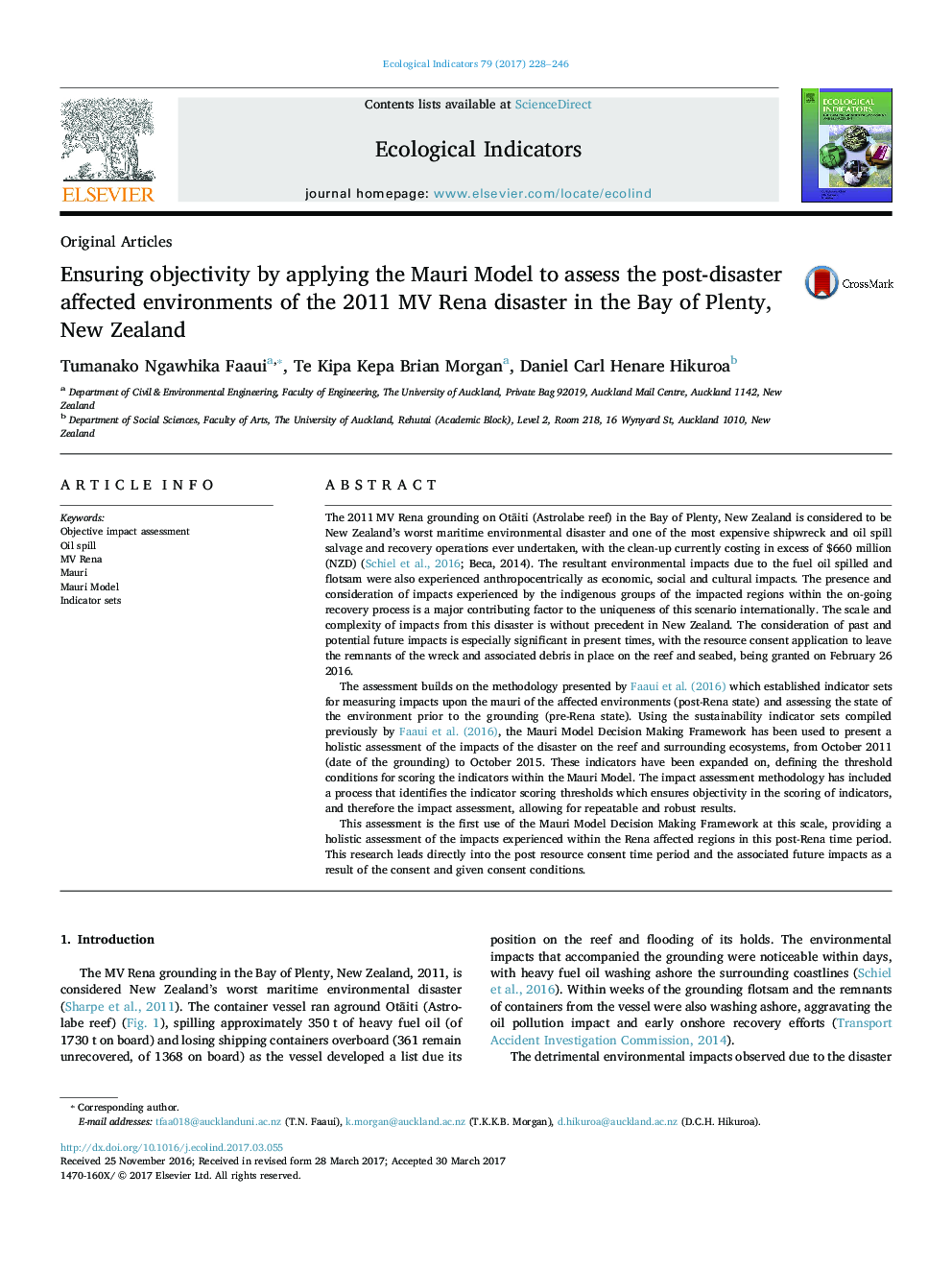| Article ID | Journal | Published Year | Pages | File Type |
|---|---|---|---|---|
| 5741770 | Ecological Indicators | 2017 | 19 Pages |
â¢A holistic assessment of the impacts of the 2011 Rena grounding is presented.â¢Impacts across environmental, social, cultural and economic dimensions are tracked.â¢Cumulative effects has shown the interconnections between individual impacts.â¢Identification of threshold conditions for scoring ensures objectivity.
The 2011Â MV Rena grounding on OtÄiti (Astrolabe reef) in the Bay of Plenty, New Zealand is considered to be New Zealand's worst maritime environmental disaster and one of the most expensive shipwreck and oil spill salvage and recovery operations ever undertaken, with the clean-up currently costing in excess of $660 million (NZD) (Schiel et al., 2016; Beca, 2014). The resultant environmental impacts due to the fuel oil spilled and flotsam were also experienced anthropocentrically as economic, social and cultural impacts. The presence and consideration of impacts experienced by the indigenous groups of the impacted regions within the on-going recovery process is a major contributing factor to the uniqueness of this scenario internationally. The scale and complexity of impacts from this disaster is without precedent in New Zealand. The consideration of past and potential future impacts is especially significant in present times, with the resource consent application to leave the remnants of the wreck and associated debris in place on the reef and seabed, being granted on February 26 2016.The assessment builds on the methodology presented by Faaui et al. (2016) which established indicator sets for measuring impacts upon the mauri of the affected environments (post-Rena state) and assessing the state of the environment prior to the grounding (pre-Rena state). Using the sustainability indicator sets compiled previously by Faaui et al. (2016), the Mauri Model Decision Making Framework has been used to present a holistic assessment of the impacts of the disaster on the reef and surrounding ecosystems, from October 2011 (date of the grounding) to October 2015. These indicators have been expanded on, defining the threshold conditions for scoring the indicators within the Mauri Model. The impact assessment methodology has included a process that identifies the indicator scoring thresholds which ensures objectivity in the scoring of indicators, and therefore the impact assessment, allowing for repeatable and robust results.This assessment is the first use of the Mauri Model Decision Making Framework at this scale, providing a holistic assessment of the impacts experienced within the Rena affected regions in this post-Rena time period. This research leads directly into the post resource consent time period and the associated future impacts as a result of the consent and given consent conditions.
